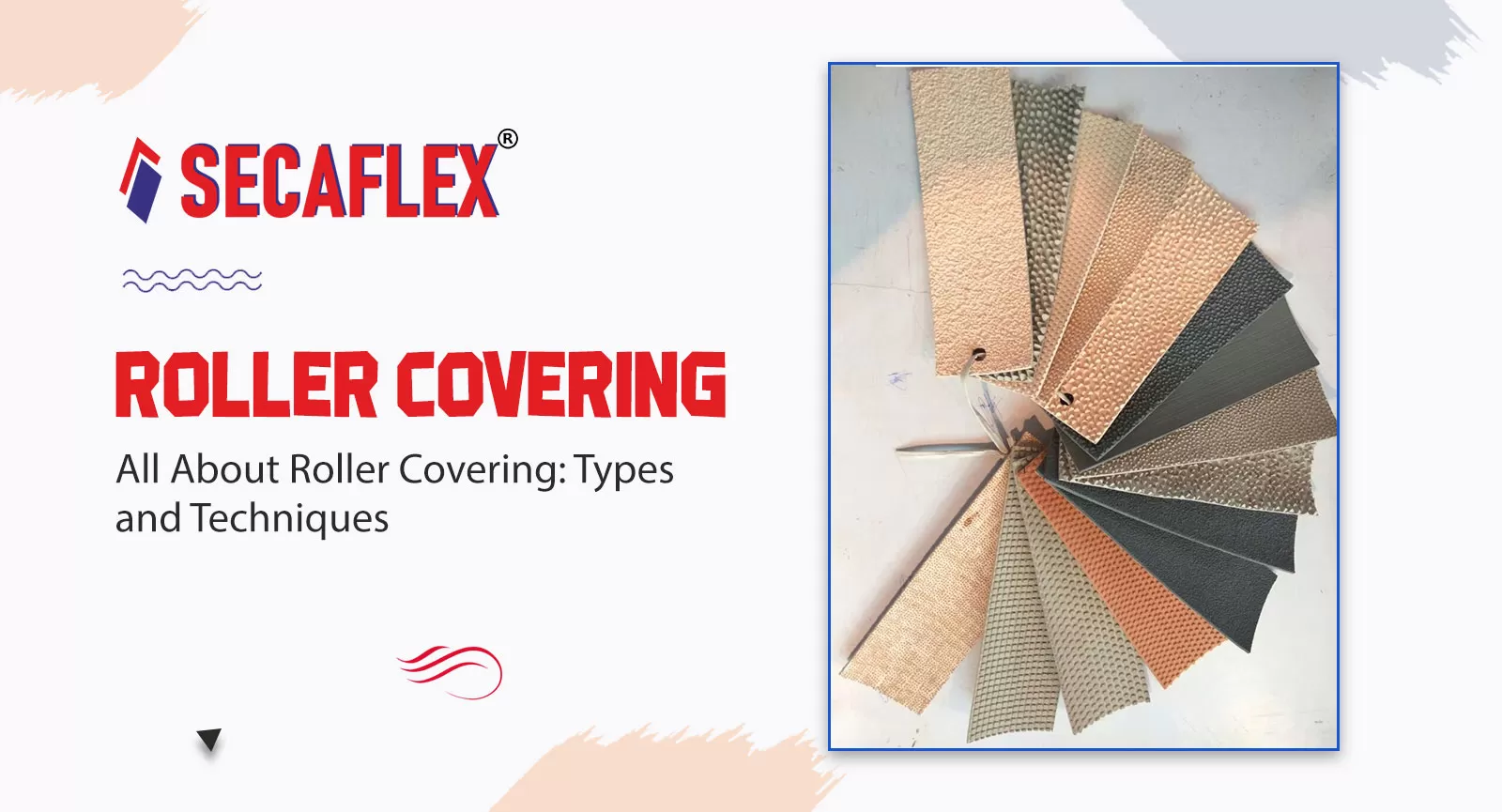- + 91-9167662789
- care@dktee.com

April 19, 2024

Roller covering, also known as roll covering, is the process of applying a new outer layer to a roller core. This outer layer, usually made from various rubber or synthetic materials, plays a crucial role in the functionality of the roller. The type of cover chosen and the application technique significantly impact the performance of the roller in its specific application.
Types of Roller Covering Materials
The most common material used for roller covering is rubber, but it comes in various types, each with its own properties:
Natural Rubber: Known for its elasticity and good grip, natural rubber is suitable for applications requiring gentle handling and a soft touch.
Synthetic Rubber: This category offers a wider range of properties depending on the specific synthetic rubber used. Some offer superior chemical resistance, while others provide higher abrasion resistance or improved temperature tolerance.
Polyurethanes: These are versatile performers, offering excellent wear resistance, good chemical resistance, and a high load-bearing capacity.
Silicones: Silicone covers excel in high-temperature environments and offer superior release properties, making them ideal for applications involving adhesives or films.
The choice of roller covering material depends on several factors, including:
Application: The intended use of the roller heavily influences the material selection. For instance, printing rollers require good ink absorption, while feeder rollers might prioritize wear resistance.
Surface Requirements: The desired surface finish of the roller cover can be smooth, grooved, or patterned. The covering material needs to be compatible with achieving the required surface texture.
Chemical Resistance: If the roller comes into contact with solvents, adhesives, or other chemicals, the covering material needs to be resistant to those substances.
Roller Covering Techniques
There are several techniques used to apply the covering material to the roller core. Here’s a look at the most common methods:
Traditional Wrapping: This method involves manually wrapping calendered rubber sheets around a rotating roller core. The sheets are overlapped and adhered together using a bonding agent. While relatively simple, this technique requires skilled labor to ensure proper adhesion and uniform thickness.
Extrusion Wrapping: This method utilizes an extruder machine that continuously feeds uncured rubber onto the rotating core. The extruded rubber forms a seamless roller covering, offering good uniformity and improved efficiency compared to traditional wrapping.
Cross-Head Extrusion: A variation of extrusion wrapping, this technique uses two extruder heads positioned at an angle to the core. This allows for the creation of bi-layered coverings with different properties in each layer.
Mandrel Building: This method involves building up the roller cover layer-by-layer using precured rubber sheets. The sheets are bonded to the core and each other using adhesives or an ebonite base layer. This technique offers good control over the thickness and properties of the final cover.
Choosing the Right Roller Covering
Selecting the appropriate covering involves considering both the material and the application technique. Here are some key points to remember:
- Identify the application requirements. Understanding the function of the roller and the materials it will interact with is crucial.
- Consult a roller covering specialist. These professionals can guide you through the selection process based on your specific needs.
- Consider factors like durability, surface finish, and chemical resistance.
- Think about the volume and budget. Certain techniques might be more cost-effective for high-volume production runs.
By carefully considering these factors, you can ensure you choose the right roller covering solution for optimal performance, extended roller life, and improved efficiency in your application.

DKT Engineering Enterprises
DKT Engineering Enterprises has vast experience in manufacturing conveyor belts in India. We are providing high quality products to our clients Since 2010.
